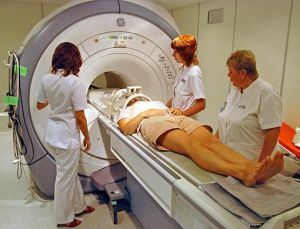 One of the modern methods of examination of organs and tissues for diagnosis of diseases is magnetic resonance imaging. But with this survey, a number of precautions must be followed. This is due to the fact that different metals can interact with the field created by the scanner. Therefore, before diagnosis, it is important to read the contraindications for MRI and the features of the study.
One of the modern methods of examination of organs and tissues for diagnosis of diseases is magnetic resonance imaging. But with this survey, a number of precautions must be followed. This is due to the fact that different metals can interact with the field created by the scanner. Therefore, before diagnosis, it is important to read the contraindications for MRI and the features of the study.
Infrequently in the modern world there are adults who do not have any dental prosthesis in the oral cavity.
In connection with the emergence of such a convenient and universal diagnostic method, such as magnetic resonance imaging, those wishing to undergo MRI examination often have a question whether this can be done with braces, dental implants, pins or crowns from a particular material?
Designs installed in the oral cavity for a long time can not be removed or inexpedient, so it is enough to inform the examining physician about them, in order to avoid possible distortion of the results and the need for a re-examination.
Contents of
- Understanding the essence of the method - how does it work?
- Question # 1 - about
- materials Question # 2 - about the doctor's awareness
- Question №3 from patients with dental implants
- Question №4 from the coronians
- Question №5 from the bracelet carriers
- Question №6 - about the pins
- Time to collect the answers in a single picture
Understanding the essence of the method - how does it work?
The essence of this diagnostic method is the phenomenon of nuclear magnetic resonance. The study does not use X-rays, therefore it is one of the safest for the human body.
During the examination, the patient is placed on a table, which subsequently moves into the tomograph. The method is based on the reaction to magnetic waves of hydrogen atoms in the tissues of human organs.
The result of the survey is the possibility to study a series of three-dimensional images of transverse and longitudinal sections of internal organs. The images obtained in this way are very clear.
A wide range of diseases can be diagnosed using MRI:
- diseases of the musculoskeletal system;
- internal organs;
- of the brain.
This type of diagnostics allows early detection of a large part of the oncological diseases, destructive changes in the 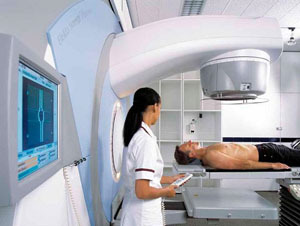 of the brain, destruction of bone tissues, etc. MRI also helps to observe the dynamics of the course of chronic diseases and the growth rate of benign neoplasms without receiving a dose of radiation. Unlike x-ray methods, magnetic resonance imaging can be used repeatedly without harm to the patient.
of the brain, destruction of bone tissues, etc. MRI also helps to observe the dynamics of the course of chronic diseases and the growth rate of benign neoplasms without receiving a dose of radiation. Unlike x-ray methods, magnetic resonance imaging can be used repeatedly without harm to the patient.
Due to the fact that MRI is one of the most informative and safe methods of research, it is gaining popularity. So it causes a lot of additional questions. Let's consider some of them.
Question number 1 - about materials
Which dental materials are least affected, and which ones can significantly affect the result of magnetic resonance imaging?
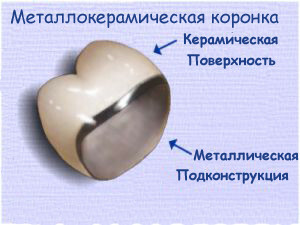 The smallest difference in the result of MRI is the metal-ceramic crowns, because the metals from which their base is made and the amount of alloy in them have almost no effect on the magnetic field of the tomograph, and hence the study can be done without loss in quality.
The smallest difference in the result of MRI is the metal-ceramic crowns, because the metals from which their base is made and the amount of alloy in them have almost no effect on the magnetic field of the tomograph, and hence the study can be done without loss in quality.
But crowns made of copper and iron can significantly distort the image quality, so it is not recommended to do an MRI with metal crowns.
The greatest influence on the magnetic field of the tomograph, and therefore on the quality of the research, is affected by the metal pins of the dental implants, since they resonate with the magnetic field of the apparatus.
Question number 2 - about the awareness of the doctor
Harm for the patient with implants, pins, braces or crowns does not cause MRI.These are rather myths and stories associated with the use of the first imperfect tomograph models. Modern equipment allows you to perform a survey with a guarantee of safety for the patient.
The only thing that will affect the presence in the oral cavity of metal fragments is the quality of the image obtained as a result of the survey. The degree of influence will depend on metals and alloys, of which denture constructions are made.
Inform the specialist about the presence of additional structures in order to enable him to select the correct tomograph settings, taking into account the metal fragments. So the image of sections of tissues and organs will be more clear.
Question # 3 from patients with dental implants
When assessing whether a patient can be examined with implants, it is important what material the crown is made of and from which metal additional parts, screws and pins are made. 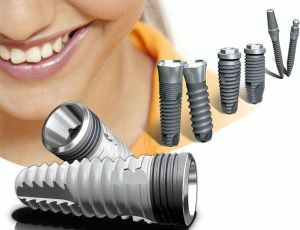
If the crown of the implant is cermet, made using modern technologies, its effect on the results of MRI will be minimal. If the crown is earlier, made of an alloy of copper and steel, the result of the study will be significantly distorted.
Pins for dental implants are usually made of materials that are diamagnetic, paramagnetic or ferromagnets. All of them affect the magnetic field, which creates a tomograph.
Therefore, before the examination of MRI, a specialist should be warned about the presence of dental implants and give him an X-ray image of their location. So, the doctor conducting the diagnostics will be able to change the tomograph settings taking into account the received information and make the research as useful and safe for the patient as possible.
Question # 4 from the coronians
Can I make an MRI with crowns, and how does this depend on their material?
The material from which the crown is made will depend a lot. If the crowns in the patient's oral cavity are more than 10 years old, they probably were made of a copper alloy with gold or steel.
Magnetic resonance imaging is not contraindicated in this case, there will be no harm to the patient. Only the image quality suffers. Therefore, before diagnosis, you should notify your doctor about the presence of dental crowns.
Modern ceramic-metal crowns do not affect the quality of the examination and do not distort the results of MRI.
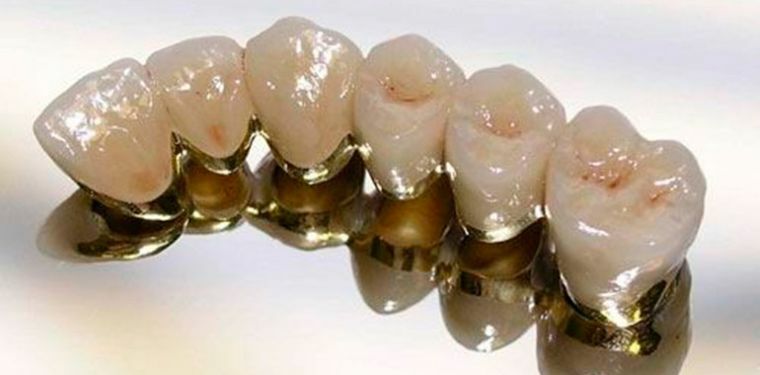
Question №5 from the bracelet carriers
Metal braces during the MRI do not explode, do not beat them, they do not tear them from the body, in a word they do not do any harm to the patient, which means that you can perform a survey, but it is difficult to get a high-quality result in the presence of metal objects.
They create resonance with the magnetic field of the tomograph and, therefore, distort the image quality. This is the only reason why doctors refuse to do magnetic resonance imaging with brackets.
Question number 6 - about the pins
The pins used in dentistry, for the most part, are made of titanium, which does not interact with the magnetic field, the 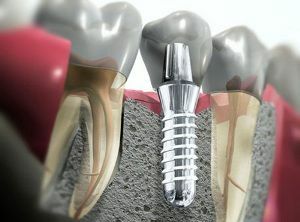 created by the scanner. Therefore, there are no contraindications for conducting MRI with titanium pins and implants on their basis. It is enough to warn about their presence of a specialist in order to preserve the informative nature of the research.
created by the scanner. Therefore, there are no contraindications for conducting MRI with titanium pins and implants on their basis. It is enough to warn about their presence of a specialist in order to preserve the informative nature of the research.
If to be absolutely exact, at all materials for reconstruction of a teeth there are passports in which the information on used metals and contra-indications is placed. Visiting a dentist, ask what material is used to explain it to the diagnostician in the future.
Time to collect answers in a single picture
99% of modern orthopedic products used for treatment, restoration and prosthetics of teeth are not contraindications for MRI examination.
All the horror stories that metal structures can overheat, explode and break out by the magnetic field of the tomograph are just myths, unconfirmed.
But before the examination, do not forget to warn the specialist about the presence of metal elements, so that he makes adjustments to the settings of the device. This precaution will help with the first survey to get the information you need and not spend money on re-diagnosis. Use modern advances in medicine competently and stay healthy.
